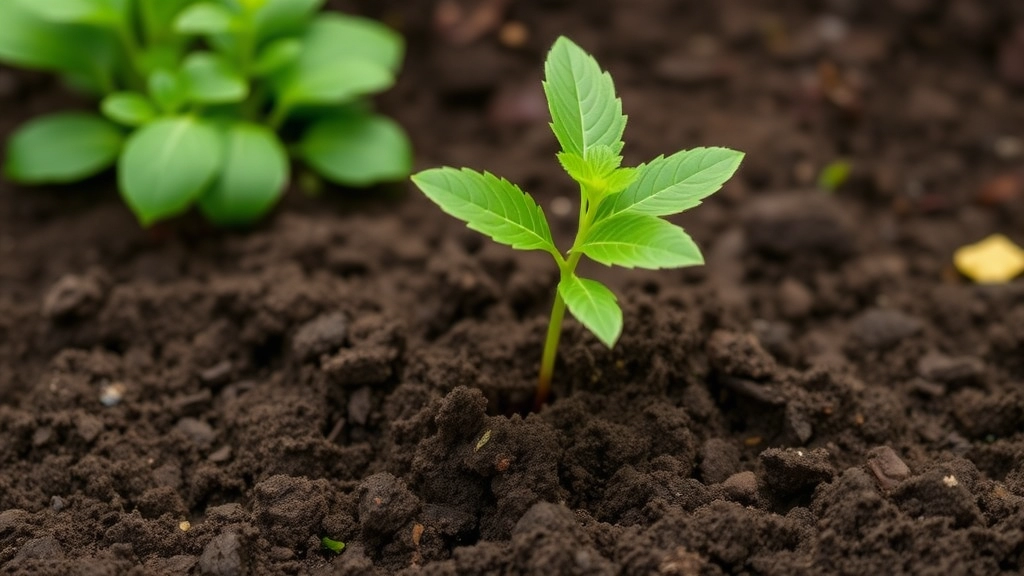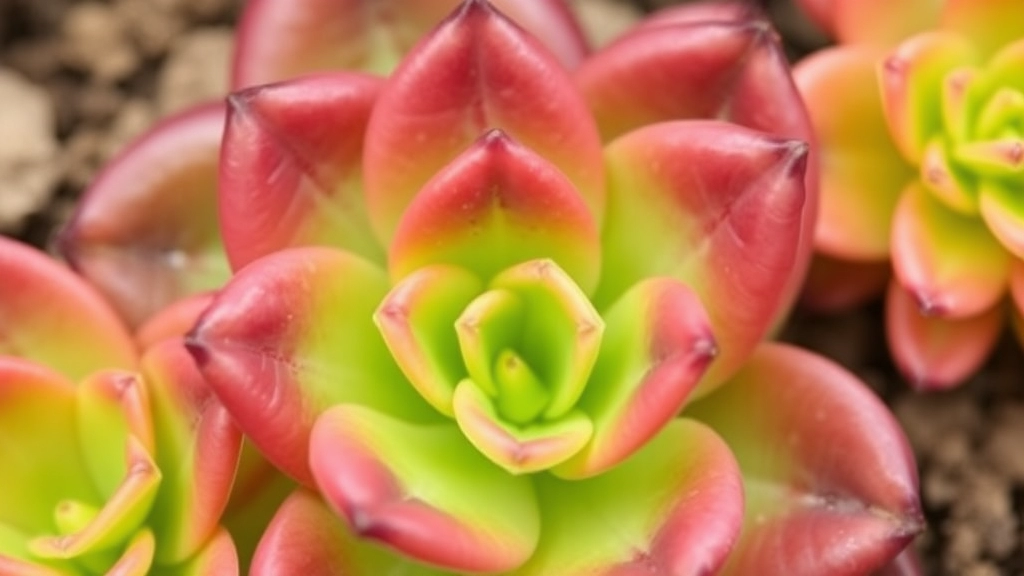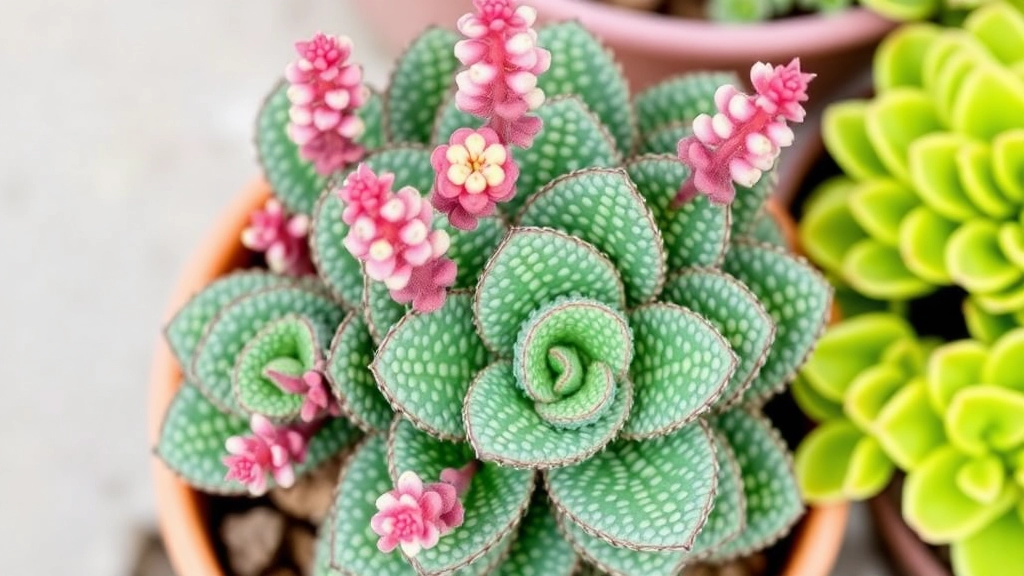Kalanchoe Flapjack Paddle Plant Guide
If you’re looking to add a unique and striking succulent to your collection, the Kalanchoe Flapjack Paddle Plant is a fantastic choice. Known for its vibrant red-tinted leaves when exposed to sunlight, this plant is both eye-catching and easy to care for. In this guide, I’ll walk you through everything you need to know about growing, caring for, and propagating the Kalanchoe Flapjack Paddle Plant.
Light Conditions
First off, let’s talk about the best light conditions. This succulent thrives in bright, indirect sunlight but can also tolerate some direct sun, which enhances its red hues.
Soil and Watering
When it comes to soil, well-draining cactus or succulent mix is ideal. Watering should be done sparingly; let the soil dry out completely between waterings. Understanding these basics will set you on the right path to enjoying a healthy and vibrant Kalanchoe Flapjack Paddle Plant.
Best Light Conditions for Kalanchoe Flapjack
When it comes to growing Kalanchoe Flapjack, one of the most pressing concerns is ensuring it receives the right light.
Optimal Light Exposure
Kalanchoe Flapjack thrives in bright, indirect sunlight.
- Direct Sunlight: While these plants can tolerate some direct sunlight, too much can scorch their leaves. Aim for a few hours of morning sun for the best results.
- Filtered Light: Placing your Flapjack near a window with sheer curtains can provide the perfect balance of light without overwhelming it.
- Indoor vs. Outdoor: If you’re growing indoors, a south or west-facing window is ideal. Outdoors, a spot with partial shade is best, especially during the hottest part of the day. For more detailed differences, check out our indoor vs. outdoor care guide.
- Signs of Insufficient Light: If the leaves start to stretch or lose their vibrant colour, it may be time to adjust their light exposure. Learn more about optimal care in our optimal care guide.
By paying attention to these light conditions, you can help your Kalanchoe Flapjack flourish.
Soil Requirements for Healthy Growth

So, you’ve got your Kalanchoe Flapjack, and you’re wondering what kind of soil it needs to thrive, right?
Let’s dive into the essentials for creating the perfect home for your paddle plant.
Well-Draining Soil
First off, Kalanchoe Flapjacks love well-draining soil.
Why?
Because they’re succulents, and they can’t stand sitting in waterlogged soil.
Here’s what you should look for:
- Cactus Mix: A pre-made cactus or succulent mix is a great choice.
- DIY Blend: If you’re feeling crafty, mix regular potting soil with perlite or coarse sand. Aim for a 2:1 ratio of soil to perlite/sand. This boosts drainage and keeps roots happy.
- pH Level: A slightly acidic to neutral pH (around 6.0 to 7.0) is ideal.
Container Choice
The container you choose also plays a role.
- Drainage Holes: Always opt for pots with drainage holes. This prevents water from pooling at the bottom.
- Material Matters: Terracotta pots are fantastic because they’re porous and help wick moisture away.
Nutrient-Rich Yet Light
While Kalanchoe Flapjacks don’t need overly rich soil, a bit of nutrient content helps.
- Organic Matter: Consider adding a bit of organic matter like compost. Just don’t overdo it; too much can retain moisture.
Testing Soil Moisture
A quick tip: check the soil moisture before watering.
Stick your finger about an inch into the soil. If it feels dry, it’s time to water.
This simple test can save your plant from root rot!
Watering Techniques for Paddle Plants
One of the most common concerns for Kalanchoe Flapjack owners is how to properly water their plants.
Overwatering can lead to root rot, while underwatering can cause wilting and stress.
Here’s how to strike the right balance:
- Check the Soil: Before watering, always check if the top inch of soil is dry. This ensures you’re not watering too frequently.
- Use Well-Draining Soil: Ensure your potting mix is designed for succulents. This aids in preventing water from sitting around the roots.
- Water Thoroughly: When you do water, do so thoroughly until you see excess water draining from the pot’s bottom. This encourages deep root growth.
- Adjust Seasonally: During the growing season (spring and summer), your Paddle Plant may require more water. Conversely, reduce watering in the dormant months (autumn and winter).
- Consider Pot Type: Using terracotta pots can help absorb excess moisture, making them a good choice for Kalanchoe Flapjacks.
- Humidity Matters: If you live in a humid environment, your plant may need less frequent watering compared to a dry climate.
By following these techniques, you can ensure your Paddle Plant thrives without the stress of over or under-watering. For more detailed care tips, check out our Kalanchoe Tomentosa watering guide and our Mother of Millions care guide.
Temperature and Humidity Preferences

When it comes to cultivating Kalanchoe Flapjack, understanding its temperature and humidity preferences is crucial for optimal growth.
Ideal Temperature Range
Kalanchoe Flapjack thrives best in a warm environment. Here are some key temperature insights:
- Optimal Range: 20°C to 30°C (68°F to 86°F).
- Nighttime Temperatures: Can tolerate cooler nights, ideally not dropping below 10°C (50°F).
- Avoid Extremes: Sudden temperature changes or prolonged exposure to temperatures below 5°C (41°F) can stress the plant.
Humidity Levels
Kalanchoe Flapjack is quite forgiving when it comes to humidity. Here’s what you need to know:
- Low to Moderate Humidity: Prefers humidity levels between 30% to 50%.
- Avoid High Humidity: Excess moisture can lead to fungal issues, so ensure good air circulation.
Practical Tips
To create the perfect environment for your Flapjack:
- Location: Place it in a spot with plenty of sunlight and away from drafts.
- Indoor Care: If indoors, consider using a humidifier during dry winter months, but avoid overly humid areas like bathrooms.
- Outdoor Care: During summer, ensure it’s not exposed to harsh winds or heavy rain.
When considering how to expand your collection of Kalanchoe Flapjack, understanding the most effective propagation methods is crucial. After discussing the essential care requirements for your Paddle Plants, let’s dive into the ways you can multiply your plants successfully.
One of the simplest and most popular methods is propagating through leaf cuttings. Here’s how you can do it:
– **Select a Healthy Leaf:** Choose a plump, healthy leaf from the parent plant.
– **Cut the Leaf:** Use a clean, sharp knife to cut the leaf at the base.
– **Dry the Cutting:** Allow the cut end to dry for a few days. This helps prevent rot.
– **Plant the Leaf:** Place the dried end into well-draining soil, ensuring it’s stable.
– **Water Sparingly:** Mist the soil lightly, and avoid overwatering.
This method is effective because Kalanchoe Flapjack can produce new roots from the leaf’s base, making it an easy and rewarding way to propagate.
Kalanchoe Flapjack often produces offsets, or “pups,” that can be separated from the main plant. Here’s how to do it:
– **Identify Offsets:** Look for small plants growing at the base of the parent.
– **Gently Remove:** Use your hands or a tool to carefully separate the offset from the main plant.
– **Let it Heal:** Allow the offset to dry for a day or two before planting.
– **Plant in Soil:** Place the offset in its own pot with well-draining soil.
– **Water Lightly:** Mist the soil to encourage root growth without overwhelming the plant.
Offsets are a fantastic way to propagate your Kalanchoe, as they are already established and have a better chance of thriving.
While less common, propagating Kalanchoe Flapjack from seeds is also an option. Here’s a straightforward guide:
– **Collect Seeds:** If your plant flowers, you can collect the seeds once they mature.
– **Prepare Seed Tray:** Use a seed tray filled with a light, well-draining mix.
– **Sow Seeds:** Scatter the seeds on the surface and lightly cover them with soil.
– **Water Carefully:** Mist the surface to avoid displacing the seeds.
– **Provide Light:** Place the tray in a warm, bright area but avoid direct sunlight.
Seed propagation can take longer and requires more patience, but it’s a rewarding process. For those interested in more detailed steps on how to plant Kalanchoe in a pot, check out this [step-by-step guide](https://planthq.org/how-to-plant-kalanchoe-in-a-pot-stepbystep-guide/). Additionally, if you’re looking for specific care tips for different varieties, you might find this [Kalanchoe succulent identification guide](https://planthq.org/kalanchoe-succulent-identification-guide-top-varieties-traits/) helpful.
VI. Fertilization Tips for Kalanchoe Flapjack

So, you’ve got your Kalanchoe Flapjack thriving under the right light and in suitable soil. What’s next? Let’s talk about fertilization.
You might wonder, “How often should I feed my paddle plant?” or “What kind of fertiliser works best?”
Here’s the lowdown:
- Frequency: Feed your Kalanchoe Flapjack during the growing season, which is typically spring and summer. A monthly feeding is usually enough.
- Type of Fertiliser: Opt for a balanced, water-soluble fertiliser. Look for something with an NPK ratio of around 10-10-10 or 20-20-20.
- Dilution: Always dilute the fertiliser to half the recommended strength. This prevents over-fertilisation, which can harm your plant.
- Application: Apply the fertiliser when the soil is slightly moist. This helps the nutrients soak in without shocking the roots.
- Signs of Need: If your Flapjack’s leaves start to look pale or growth slows down, it might be time for a feeding boost.
Remember, less is often more when it comes to fertilising succulents.
Preventing and Treating Common Issues
As you nurture your Kalanchoe Flapjack, it’s essential to be aware of potential issues that may arise. Understanding how to prevent and treat these problems can keep your paddle plant thriving.
Common Issues to Watch For
- Overwatering
- Symptoms: Yellowing leaves, mushy stems.
- Prevention: Ensure well-draining soil and allow the top inch of soil to dry out between watering.
- Treatment: Remove any affected leaves and reduce watering frequency.
- Underwatering
- Symptoms: Wrinkled or shrivelled leaves.
- Prevention: Establish a regular watering schedule based on the season.
- Treatment: Water thoroughly, allowing excess to drain.
- Pests
- Common pests include mealybugs and aphids.
- Prevention: Regularly inspect your plant and maintain good air circulation.
- Treatment: Use insecticidal soap or neem oil as needed.
- Fungal Issues
- Symptoms: Spots on leaves or a white powdery coating.
- Prevention: Avoid overhead watering and ensure good airflow.
- Treatment: Remove affected leaves and apply a fungicide if necessary.
- Leaf Drop
- Causes: Temperature fluctuations or stress.
- Prevention: Keep your plant in a stable environment.
- Treatment: Identify the cause and adjust care accordingly.
By staying vigilant and proactive, you can prevent many of these common issues from affecting your Kalanchoe Flapjack. For a comprehensive care guide, check out our complete guide to caring for Kalanchoe Tomentosa. Additionally, if you’re interested in other varieties, explore our Kalanchoe succulent identification guide.
Indoor vs. Outdoor Growing Practices
When it comes to Kalanchoe Flapjack, you might be wondering whether to keep it indoors or let it bask in the great outdoors. Each option has its perks and challenges, and understanding these can help you make the best choice for your plant.
Indoor Growing:
Keeping your Flapjack indoors has its benefits:
- Controlled Environment: You can easily manage light, temperature, and humidity.
- Protection from Pests: Indoor plants are less likely to face pests and diseases.
- Year-Round Growth: With the right conditions, your plant can thrive all year.
However, it does come with some downsides:
- Limited Light: You might need to supplement with grow lights if natural light isn’t enough.
- Dry Air: Indoor heating can make the air dry, so you’ll need to watch humidity levels.
Outdoor Growing:
On the flip side, growing your Flapjack outdoors can be a game-changer:
- Natural Sunlight: Your plant gets the full spectrum of sunlight, which is ideal for growth.
- Fresh Air: Outdoor conditions can promote healthy growth and vibrant colours.
But it’s not all sunshine and rainbows:
- Weather Vulnerability: Extreme temperatures, wind, and heavy rain can stress your plant.
- Pest Exposure: Outdoor plants are more susceptible to pests and diseases.
So, which is better? It really depends on your living situation and how much effort you want to put in.
If you’re in a climate with mild winters, outdoor growing can be a breeze. But if you’re in a colder area, bringing your Flapjack inside during the winter months is a smart move.
For more detailed care tips, check out our Kalanchoe Blossfeldiana care guide and our guide on the best soil for Kalanchoe Blossfeldiana.
FAQs on Kalanchoe Flapjack (Paddle Plant)
What type of soil is best for Kalanchoe Flapjack?
Kalanchoe Flapjacks thrive in well-draining soil. You can use a pre-made cactus or succulent mix or create a DIY blend of regular potting soil with perlite or coarse sand in a 2:1 ratio. Aim for a slightly acidic to neutral pH (around 6.0 to 7.0).
What kind of container should I use for my Kalanchoe Flapjack?
Choose containers with drainage holes to prevent water from pooling. Terracotta pots are ideal as they are porous and help wick moisture away.
How often should I water my Kalanchoe Flapjack?
Check the soil moisture before watering. Stick your finger about an inch into the soil; if it feels dry, it’s time to water. This helps prevent root rot.
What are the ideal temperature conditions for Kalanchoe Flapjack?
Kalanchoe Flapjack thrives in temperatures between 20°C to 30°C (68°F to 86°F). It can tolerate cooler nights but ideally not below 10°C (50°F). Avoid sudden temperature changes or prolonged exposure to temperatures below 5°C (41°F).
What humidity levels are suitable for Kalanchoe Flapjack?
Kalanchoe Flapjack prefers low to moderate humidity levels, between 30% to 50%. High humidity can lead to fungal issues, so ensure good air circulation.
How often should I fertilize my Kalanchoe Flapjack?
Feed your Kalanchoe Flapjack monthly during the growing season (spring and summer) with a balanced, water-soluble fertilizer. Dilute the fertilizer to half the recommended strength to prevent over-fertilization.
What type of fertilizer should I use for my Kalanchoe Flapjack?
Opt for a balanced fertilizer with an NPK ratio of around 10-10-10 or 20-20-20. Apply the fertilizer when the soil is slightly moist to help the nutrients soak in without shocking the roots.
What should I do if my Kalanchoe Flapjack’s leaves look pale or growth slows down?
If your Flapjack’s leaves start to look pale or growth slows down, it might be a sign that it needs a feeding boost. Ensure you are fertilizing it monthly during the growing season and check for any other care issues.
Can I grow Kalanchoe Flapjack indoors?
Yes, Kalanchoe Flapjack can be grown indoors. Ensure it gets plenty of sunlight and is placed away from drafts. During dry winter months, consider using a humidifier, but avoid overly humid areas like bathrooms.
What should I consider when placing my Kalanchoe Flapjack outdoors?
When placing your Kalanchoe Flapjack outdoors, ensure it’s not exposed to harsh winds or heavy rain. Provide plenty of sunlight and avoid extreme temperature changes.
References
-
Growing Kalanchoe Flapjack Plant
-
Kalanchoe Flapjack Care
-
Kalanchoe Thyrsiflora Care Guide
